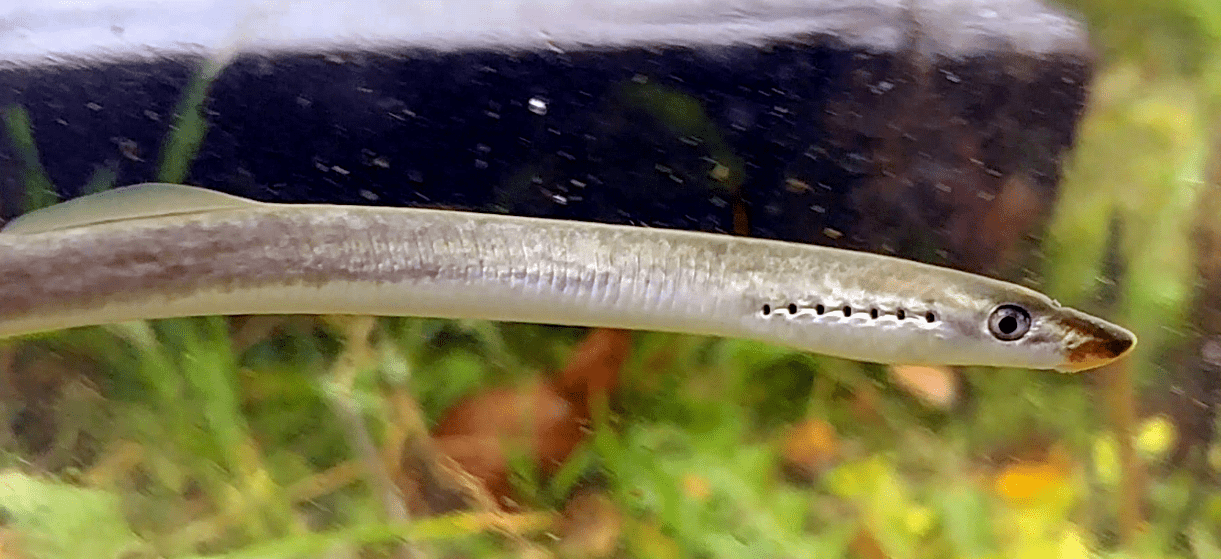Brook lamprey

Adult brook lamprey (photo: Jelle Wissink, CC BY-SA 4.0)
This primitive, elusive, and rather strange species lives in rivers in the Stour Catchment and may also be found in drainage ditches. It has declined and is quite rare in some areas of the UK, but is thought to be fairly well distributed in parts of England. Superficially, brook lampreys look like eels but are unrelated. They start life in a larval form, with no eyes or mouth, feeding by filtering particles of organic matter from the water. They remain in this state, buried in sandy sediments, for three to seven years. They then metamorphose into adults, developing eyes, and a mouth which has no jaws but takes the form of a round sucker. Despite now having a mouth, the adults are unable to feed – their sole purpose is to swim upstream towards the river’s headwaters and spawn. The sucker mouth is used for moving stones on the river bed to create spawning pits, and for attaching to the river bed in fast flowing streams. A few weeks after spawning, the adults die. KSCP’s work to enhance river habitats benefits many aquatic species, including brook lampreys.
